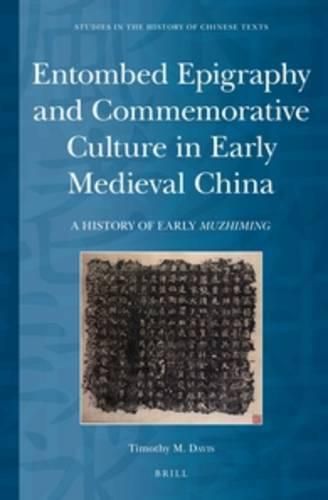Readings Newsletter
Become a Readings Member to make your shopping experience even easier.
Sign in or sign up for free!
You’re not far away from qualifying for FREE standard shipping within Australia
You’ve qualified for FREE standard shipping within Australia
The cart is loading…






In Entombed Epigraphy and Commemorative Culture Timothy M. Davis presents a history of early muzhiming-the most versatile and persistent commemorative form employed in the elite burials of pre-modern China. While previous scholars have largely overlooked the contemporary religious, social, and cultural functions of these epigraphic objects, this study directly addresses these areas of concern, answering such basic questions as: Why were muzhiming buried in tombs? What distinguishes commemorative biography from dynastic history biography? And why did muzhiming develop into an essential commemorative genre esteemed by the upper classes? Furthermore, this study reveals how aspiring families used muzhiming to satisfy their obligations to deceased ancestors, establish a multi-generational sense of corporate identity, and strengthen their claims to elite status.
$9.00 standard shipping within Australia
FREE standard shipping within Australia for orders over $100.00
Express & International shipping calculated at checkout
In Entombed Epigraphy and Commemorative Culture Timothy M. Davis presents a history of early muzhiming-the most versatile and persistent commemorative form employed in the elite burials of pre-modern China. While previous scholars have largely overlooked the contemporary religious, social, and cultural functions of these epigraphic objects, this study directly addresses these areas of concern, answering such basic questions as: Why were muzhiming buried in tombs? What distinguishes commemorative biography from dynastic history biography? And why did muzhiming develop into an essential commemorative genre esteemed by the upper classes? Furthermore, this study reveals how aspiring families used muzhiming to satisfy their obligations to deceased ancestors, establish a multi-generational sense of corporate identity, and strengthen their claims to elite status.